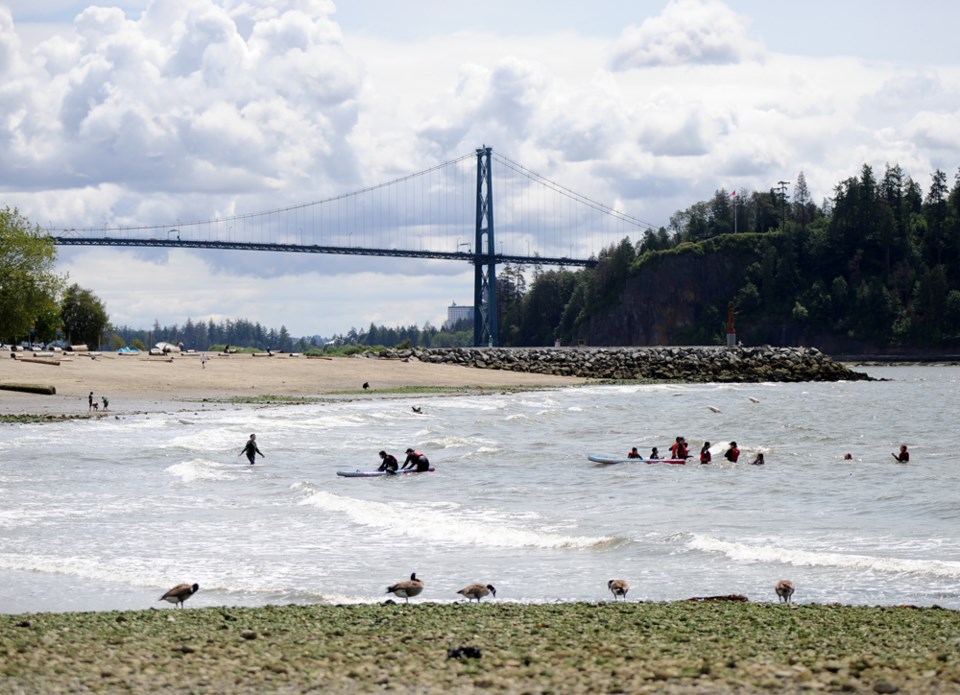Note: This story originally appeared in the North Shore Progress Report, a special feature section of the North Shore News.
The affluent community of West Vancouver, 10 minutes from downtown Vancouver, prides itself on its seaside village-like atmosphere, sprawling parks and trails, and access to the mountains.
And over the decades its residents have striven to keep it that way.
Who’s who?
The census shows West Vancouver to be a Lower Mainland outlier in many respects. It has one of the highest reported household incomes in the country. Demographically, its residents have the third oldest average age compared to other Metro Vancouver municipalities, and young people are particularly underrepresented.
Housing is an exclusive affair in West Van. In 2021, the average assessment for a single-family home was $3.7 million, while the average assessment for a condo was $1.6 million. The vacancy rate for rental apartments was last pegged by the Canadian Mortgage and Housing Corp. at a mere one per cent. In Ambleside, where half of the population are renters, 97 per cent of the purpose-built rental apartments were built in the 1960s and ’70s.
The municipality is also unique in that it is one of the only in B.C. that has no industrial zoning. There may be towering red cedars on the waterfront instead of towering smokestacks or grain terminals, but without valuable industrial land, it means West Vancouver residential property owners shoulder a disproportionately high share of the tax burden compared to their neighbours around the region.
About half of the people living in Ambleside, the district’s main commercial/residential hub, are over the age of 65.
But, this isn’t to say the sun is setting on West Van (though the sunsets are lovely to see there, particularly from Lighthouse Park or the Hi View Lookout on Cypress Bowl Road).
Future plans
The Ambleside and Dundarave Business Improvement Association has been taking on some ambitious planning and beautification projects to inject some excitement and commerce back into the sleepy village.
On their advice, council recently approved plans to allow breweries, distilleries, and wineries to set up shop in certain business areas. It’s a fitting move, as the very first craft brewery in B.C. got its start in Horseshoe Bay in the early 1980s.
The ADBIA also commissioned some stunning murals on otherwise blank walls, and recently led a visioning process generating some enthusiasm for revitalization of the neighbourhood.
The municipality has completed two local area plans that will allow for future redevelopment at the Taylor Way and Marine Drive area (near Park Royal), as well as in Horseshoe Bay. And the Ambleside area plan is next on the list. District staff say it should add another 1,000 to 1,200 net new homes, planned in such a way that they help maintain the seaside village feel of the area but also address the district’s challenges in demographics and aging housing stock.
At higher elevations, the municipality is also seeing through a plan for Cypress Village, a new mountainside village centre envisioned to be a complete community with dense residential, business and services within walking distance of each other.
Innate beauty
The district’s plans for more housing options and demographic shifts will likely be a work in progress for years to come, but West Vancouver will remain loaded with both natural and cultural gems. The district is home to the wildly popular Cypress Provincial Park, and the Cypress Mountain ski resort within it. On the slopes of Hollyburn Mountain and in Lighthouse Park, you can find some of the last stands of old-growth trees bordering civilization in Metro Vancouver. And scuba divers come from all over to explore the floor of Howe Sound off Whytecliff Park.
West Van’s waterfront parks play host to some very well attended festivals, including the Bridge Festival each June, Harmony Arts Festival in July and August, and the annual Ambleside Music Festival in August, which in years past has drawn artists such as Sarah McLachlan, Sheryl Crow and Neil Young.
And Horseshoe Bay, the village of cottages and hub for BC Ferries routes to Nanaimo, Bowen Island and the Sunshine Coast, remains the most picturesque place in the Lower Mainland to sit and enjoy a basket of fish ’n’ chips.
The North Shore Progress Report also contained features on the City of North Vancouver, District of North Vancouver, Squamish Nation and Tsleil-Waututh Nation. The entire feature is also available as a digital edition.



